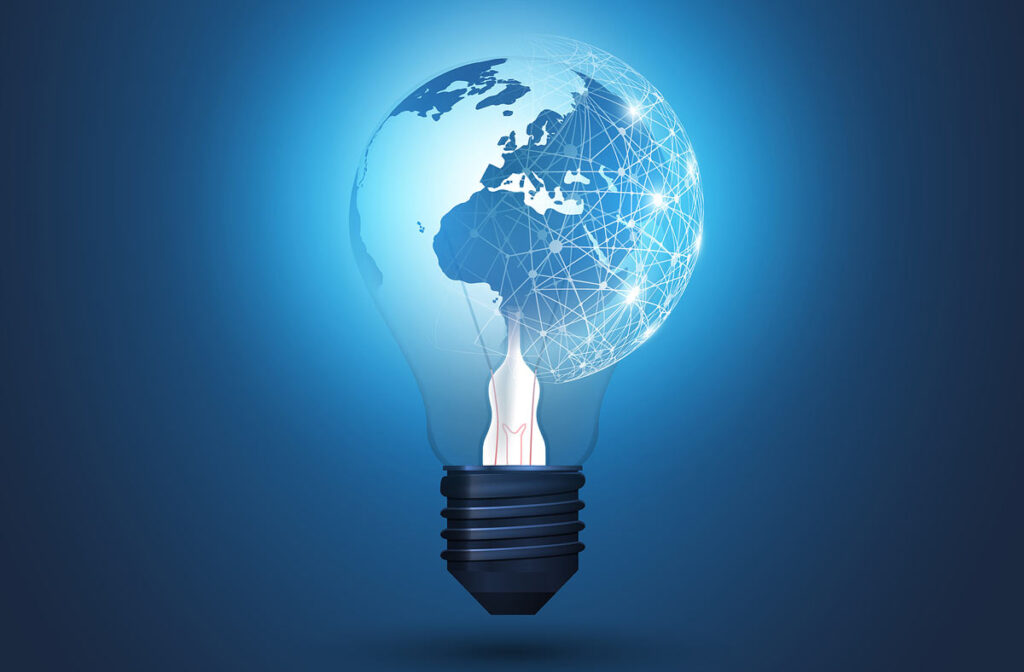As if the world needed any further reminder about the geopolitical importance of the Russian invasion of Ukraine, it brings to the fore that energy – and the quest for energy independence – must be top national security priorities.
As Russia puts the squeeze on Western Europe and cuts back exports of natural gas in the run up to winter, Moscow’s behavior is hammering home that global energy and energy infrastructures are particularly vulnerable to the slings and arrows of just a single nation’s national interests.
The U.S. learned this lesson in a very hard way in the 1970s and, unfortunately, is set to learn it again unless there is a determined course correction.
The Arab Oil Embargo, which began in October 1973, threw the United States and the world into turmoil. For the United States, it revealed a vulnerability to external forces that took the national consciousness by surprise. Fortress America had become America the Dependent – heavily dependent– on oil from the Middle East.
At the time, there were extraordinary efforts to address the situation. A study ordered by President Nixon, for which I wrote the executive summary, found that America’s domestic natural gas was a depleted resource, oil a dwindling resource, and only coal in abundance along with nuclear power for electricity generation. Energy self-sufficiency became both a national ambition and a political byword.
Today, this self-sufficiency is at hand due to technology. A combination of three technologies — horizontal drilling in tandem with 3-D seismic surveying and hydraulic fracturing – has unleashed huge untapped oil and gas resources.
Even more importantly, “renewable” sources of electricity have taken center stage. Wind and solar power, initially discounted, have evolved and matured, and now are at the leading edge of electricity production. A new battery technology, lithium-ion, has accelerated a move to electrify everything, especially transportation. It is a revolution extending from the lawn mower to intercity trucks.
But this focus away from traditional fossil fuels to “renewables” has brought with it a whole new set of national supply vulnerabilities. Prime example is the fact that the U.S. produces very few of the minerals and metals needed to make the batteries that are the heart of the electric vehicle revolution.
This situation isn’t analogous to the oil upheaval of the 1970s. The materials in play — cobalt, copper, graphite, lithium, magnesium, nickel — are mostly sourced overseas. The primary sources for some of these are telling: cobalt, Congo; graphite, China; lithium, South America; nickel, Indonesia.
China has played a long game successfully, becoming dominant in two ways. It dominates the processing of minerals and metals wherever mined across the globe and processes and exports some 90 percent of rare earth metals, regardless of their origin.
The second way China dominates is that it has also bought minerals and metals mining in many countries, tying production into long-term contracts.
Electricity generation in the U.S. and the grid are vulnerable
On paper at least, China controls the future of electrification. Along with control of processing, China is far more advanced in the adoption of electric vehicles and dominates both global battery production and the manufacture of solar photovoltaic cells.
As every car maker in every country is planning an EV future, governments around the world are seeking new supply chains and new contractual arrangements. But for the foreseeable future, electrification is subject to Chinese intervention.
Scientists in the United States and other countries are developing new batteries and battery components. Synthetics may relieve some pressure – for example, synthetic graphite. As manufacturers struggle to increase the energy density of batteries, new configurations and materials substitutions will evolve.
But the real worry isn’t just the supply chain, it’s the electric grid itself. It has been described as the world’s biggest real-time machine, and rightly so. One fear is that the grid will be destabilized if the storage available, mostly batteries, doesn’t increase dramatically. Another challenge is the fact that U.S. utilities are under constant daily cyberattacks.
I speak with U.S. utility CEOs on a regular basis, and all tell me that cybersecurity is the issue keeping them awake at night.
Threats originate from these sources:
· Cyber-adventurers, usually individuals curious to see how much damage they can do.
· Criminal organizations or individuals seeking ransoms.
· Terrorist groups or individuals seeking to inflict damage.
· States and state-sponsored organizations seeking to bring down the grid.
Another concern is whether bulk power equipment, like transformers, which are mostly sourced from China, contain rogue sensors that can be activated to damage the grid, but which normal IT scans can’t detect.
The grid is the nation’s most vital asset, a top national security concern, if there ever was one. And if it goes down for any length of time, our civilized way of life will give way to utter chaos in a very short time.
We are now, and will be ever more so, grid-dependent and vulnerable.







